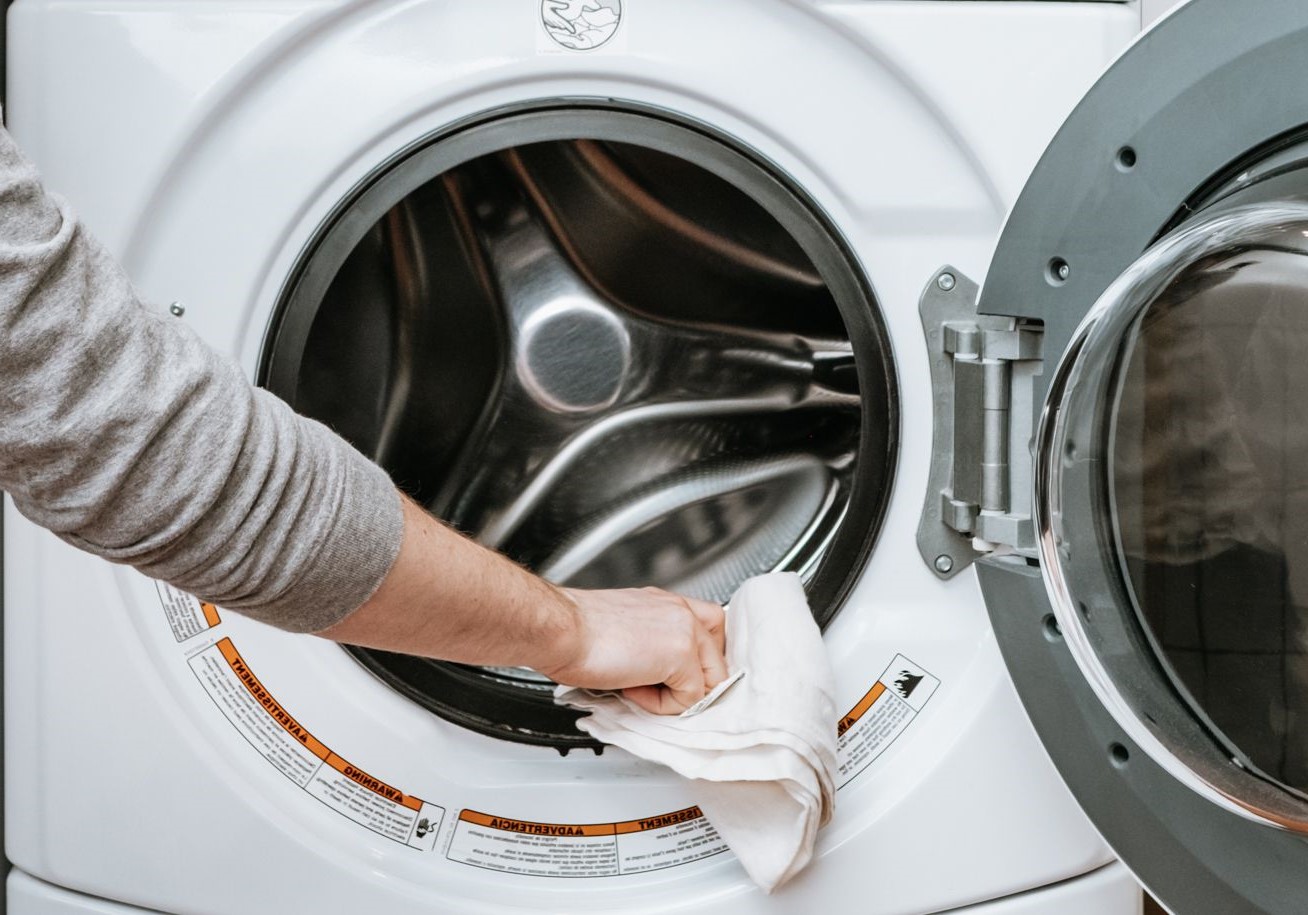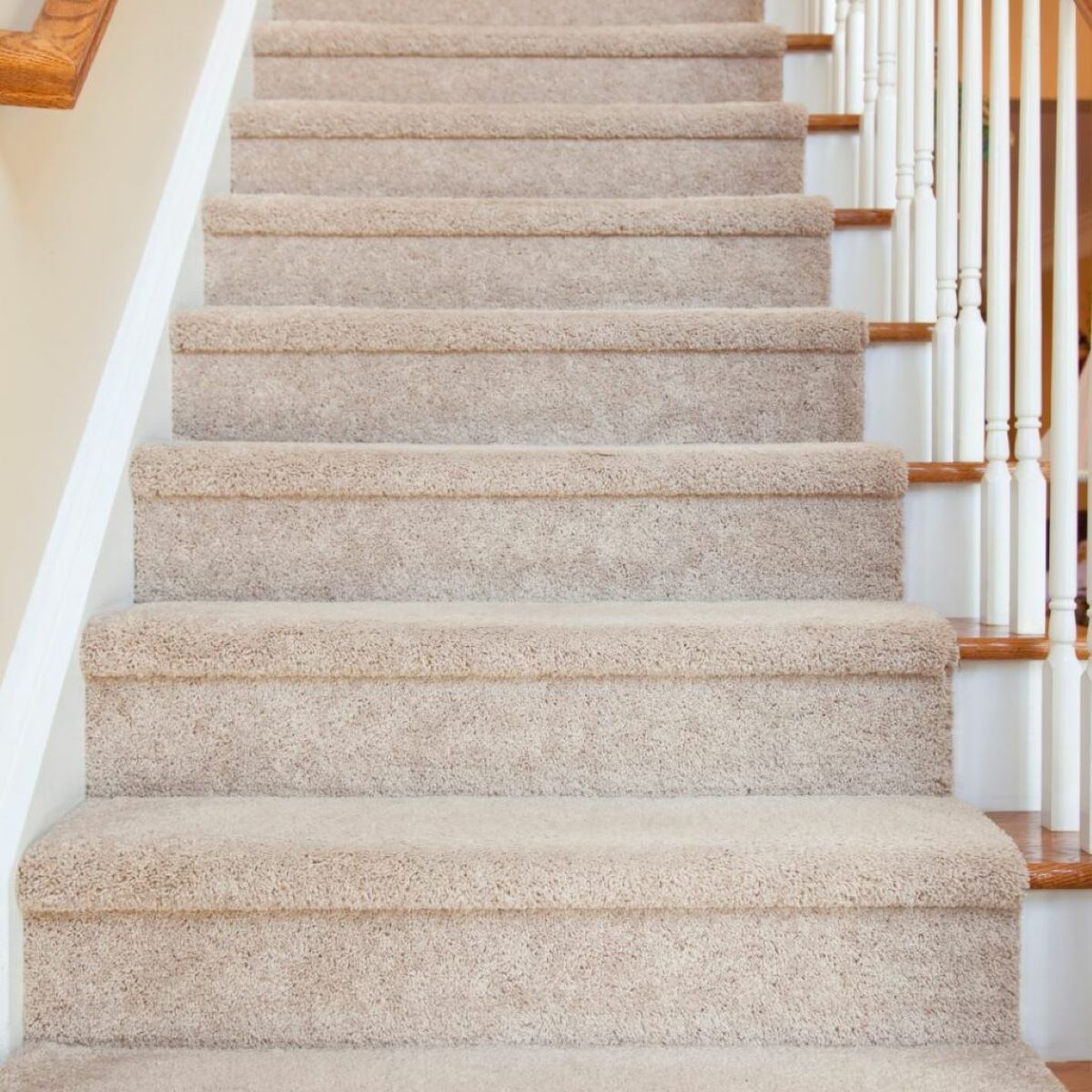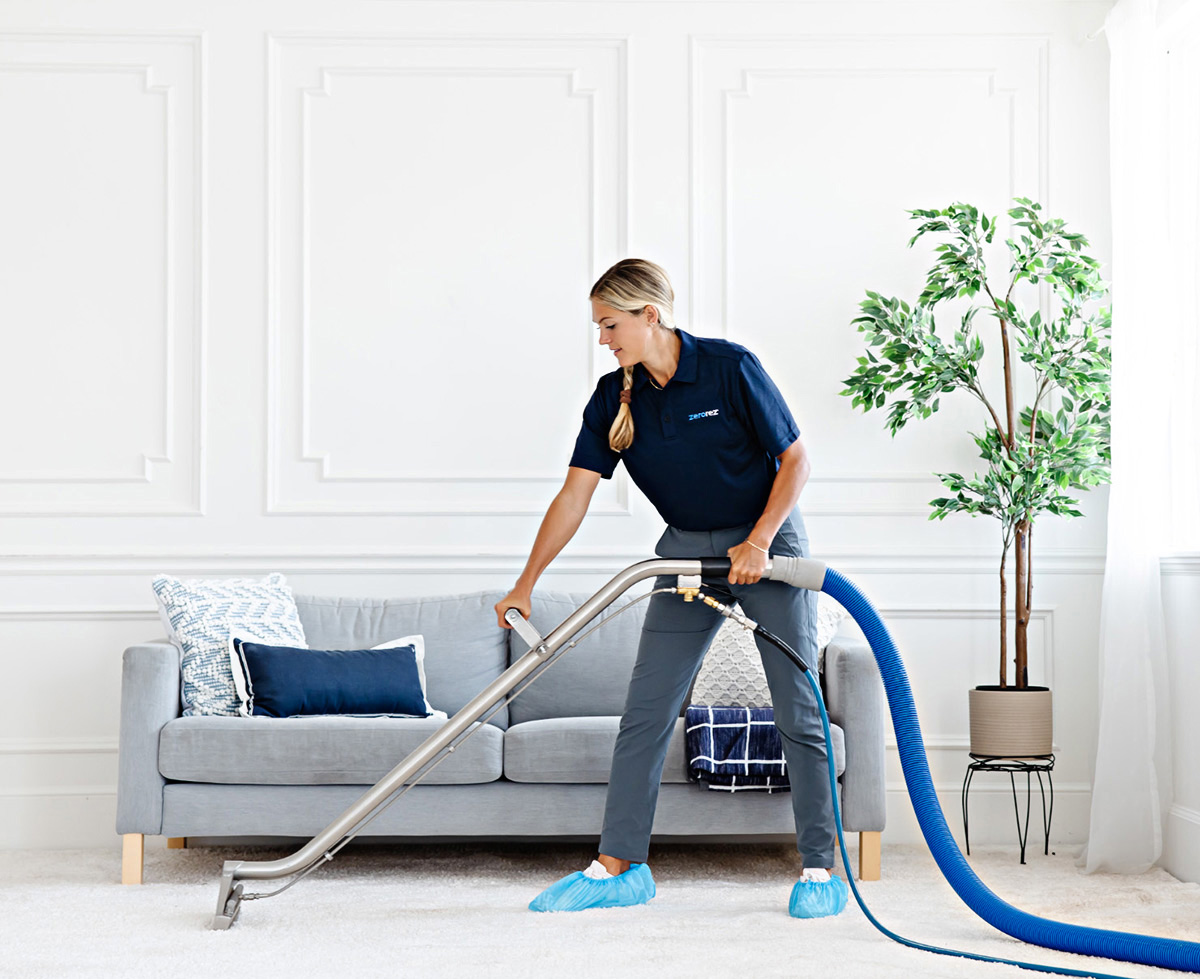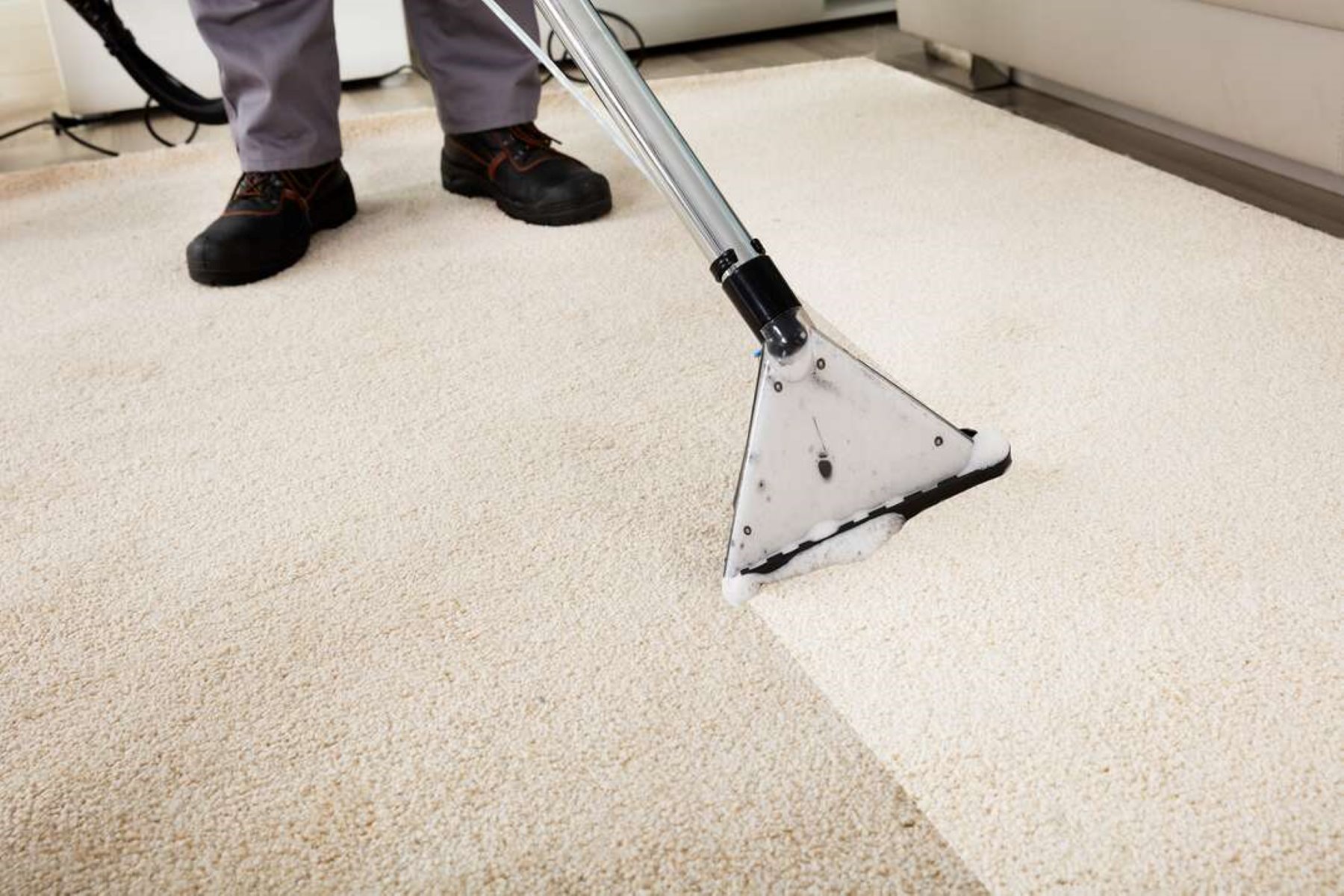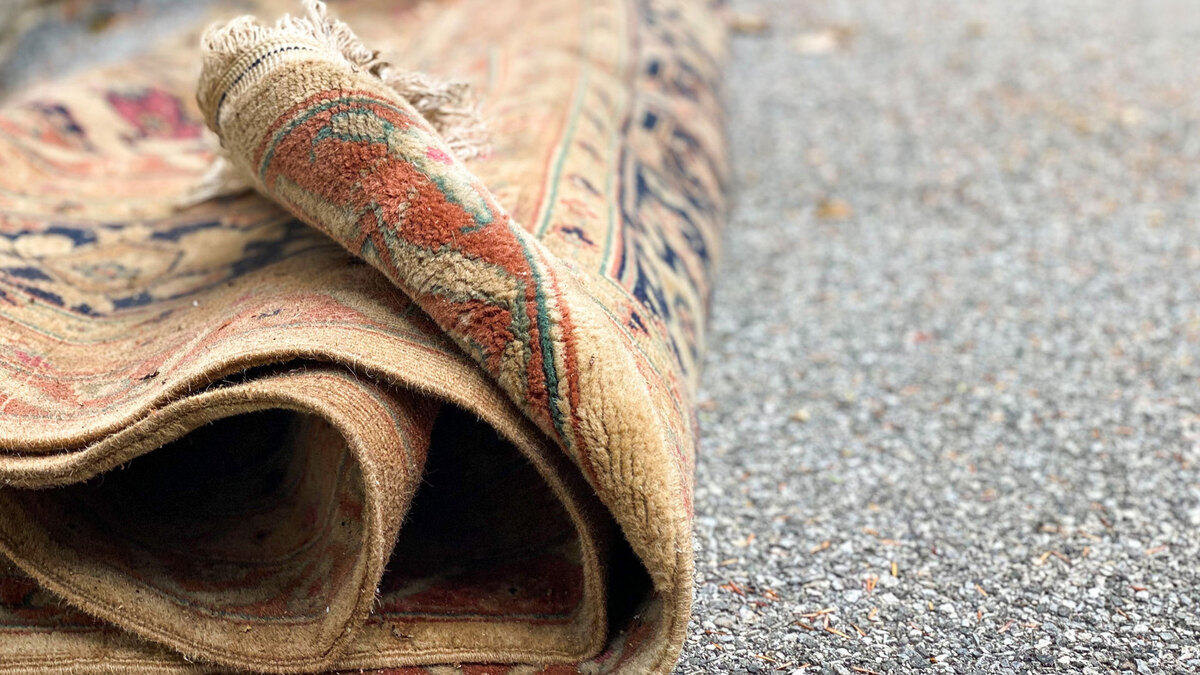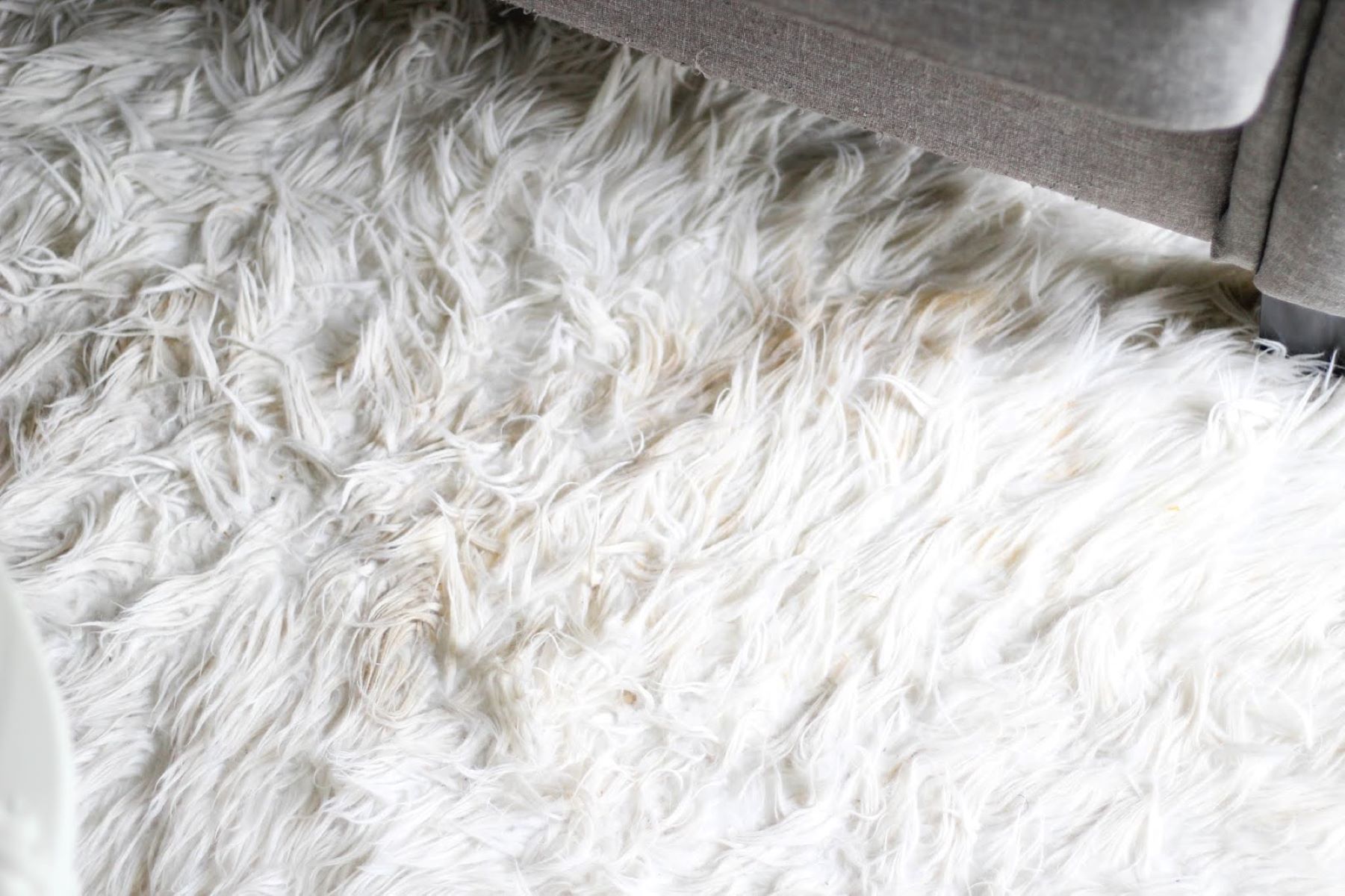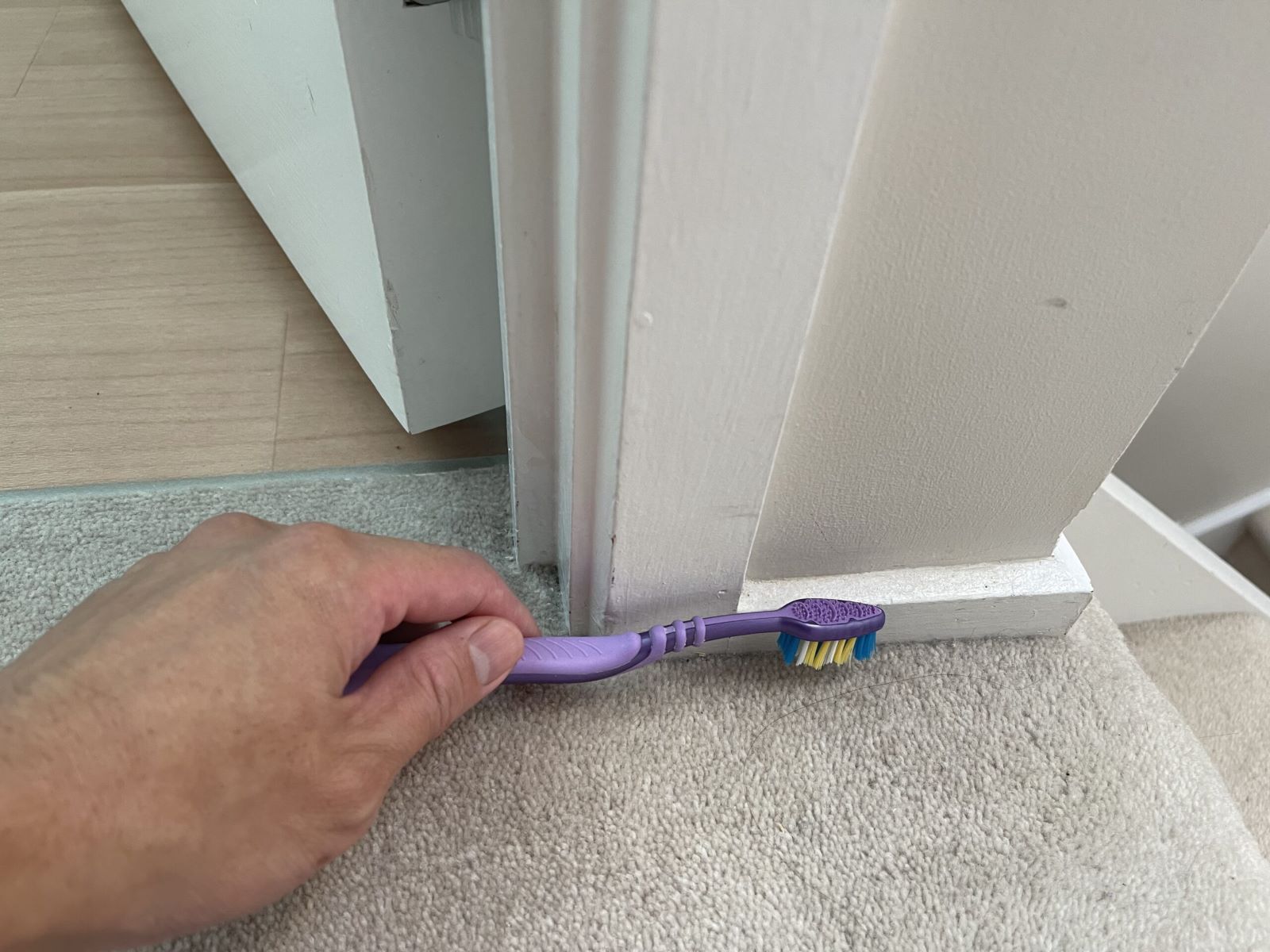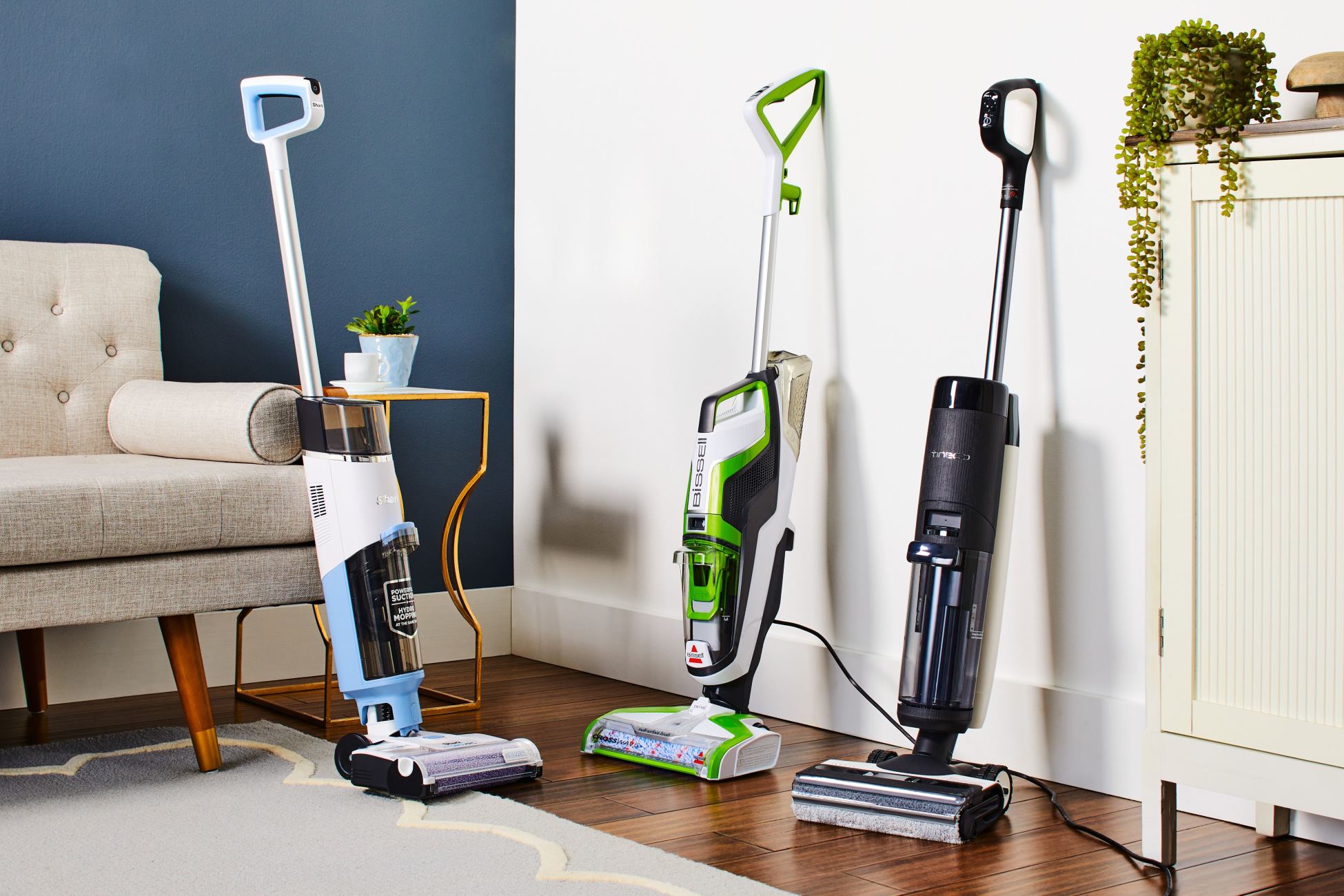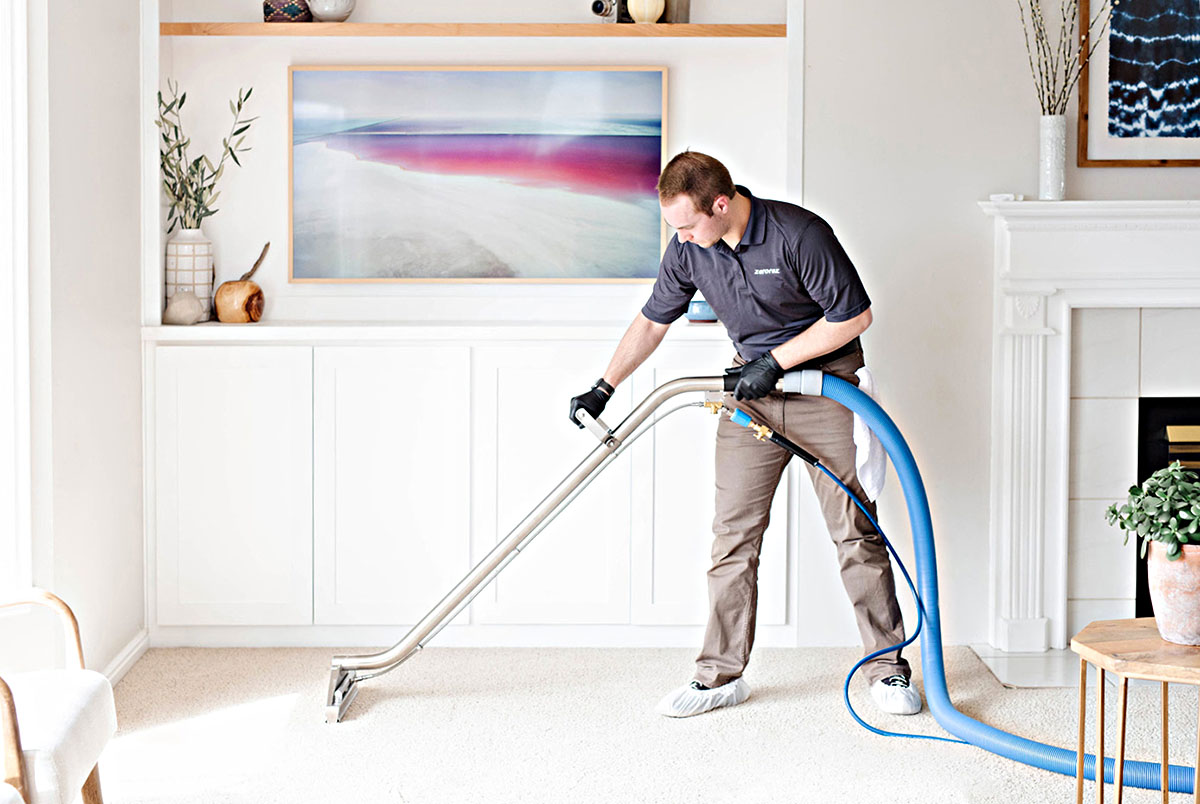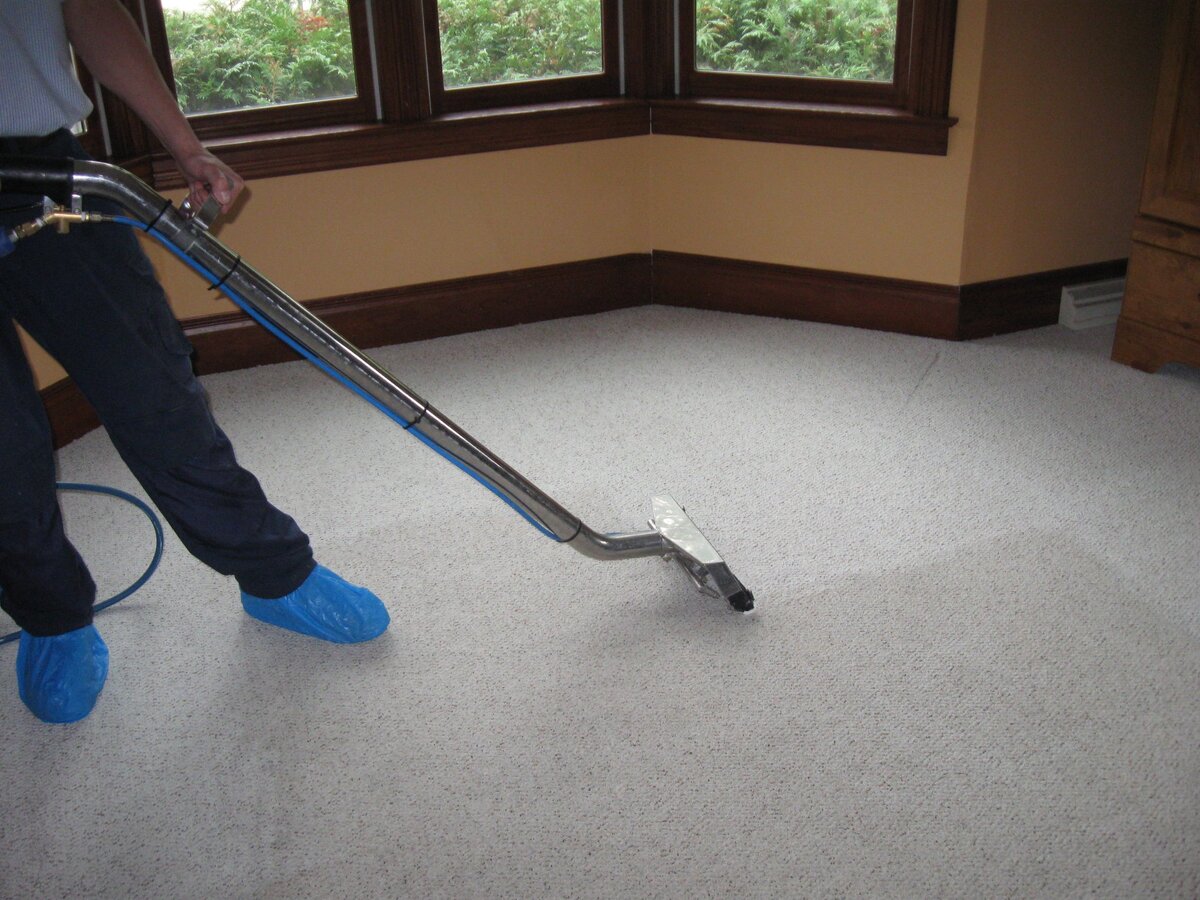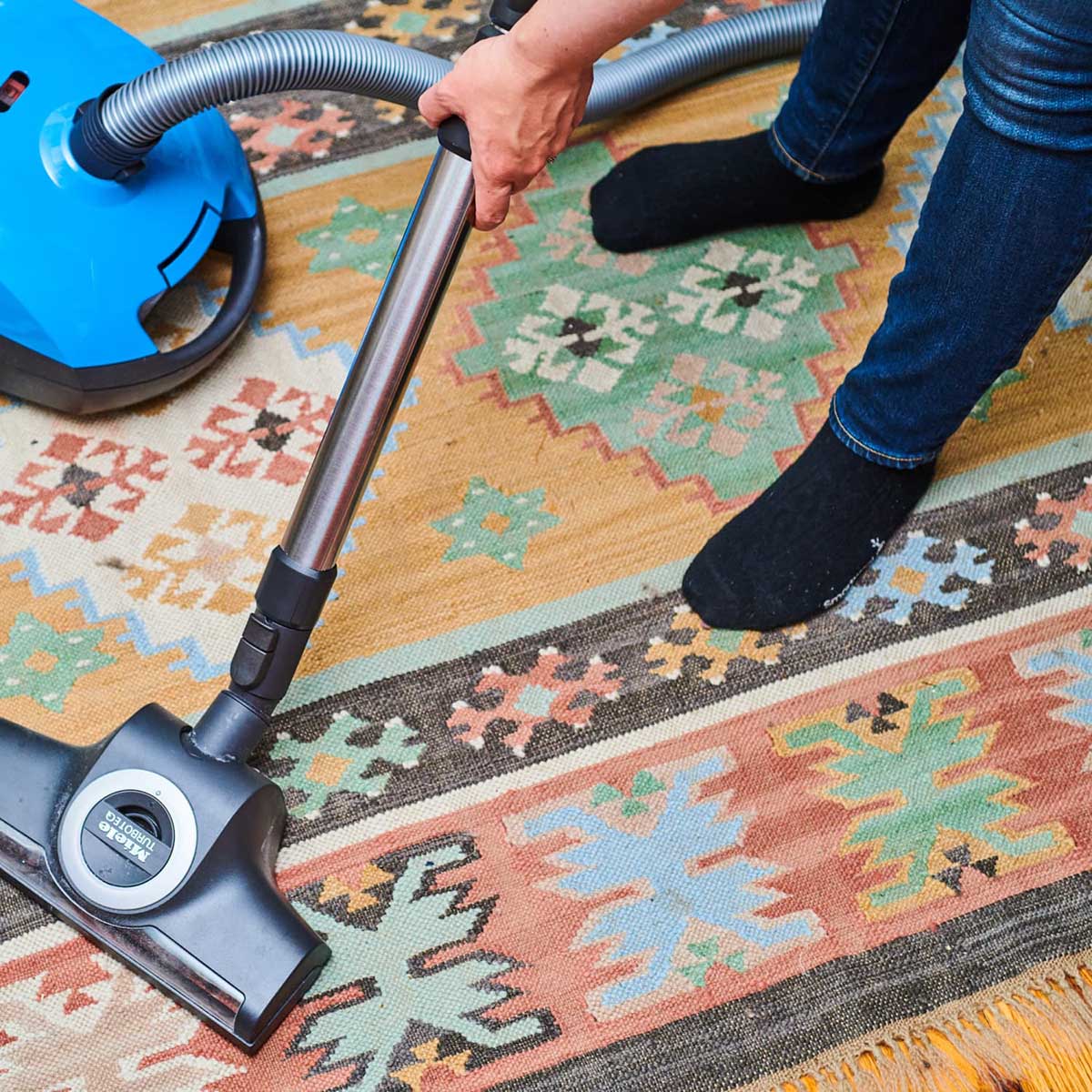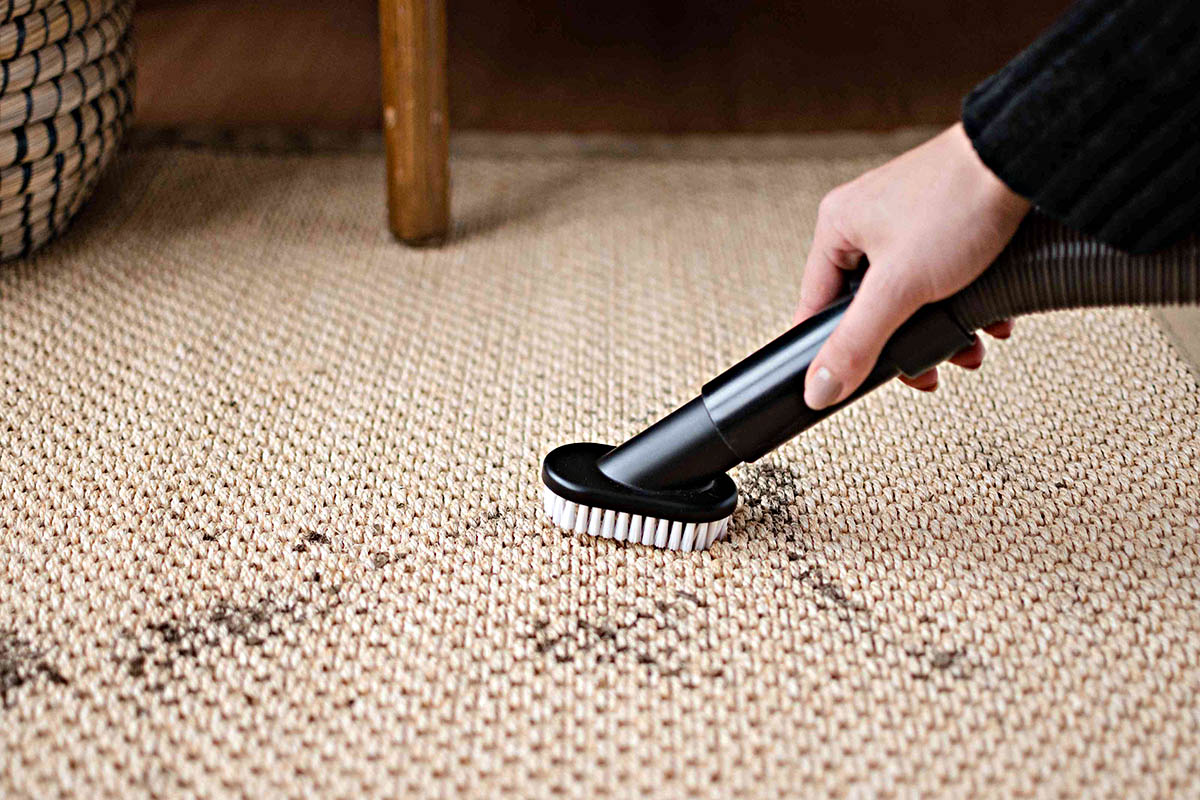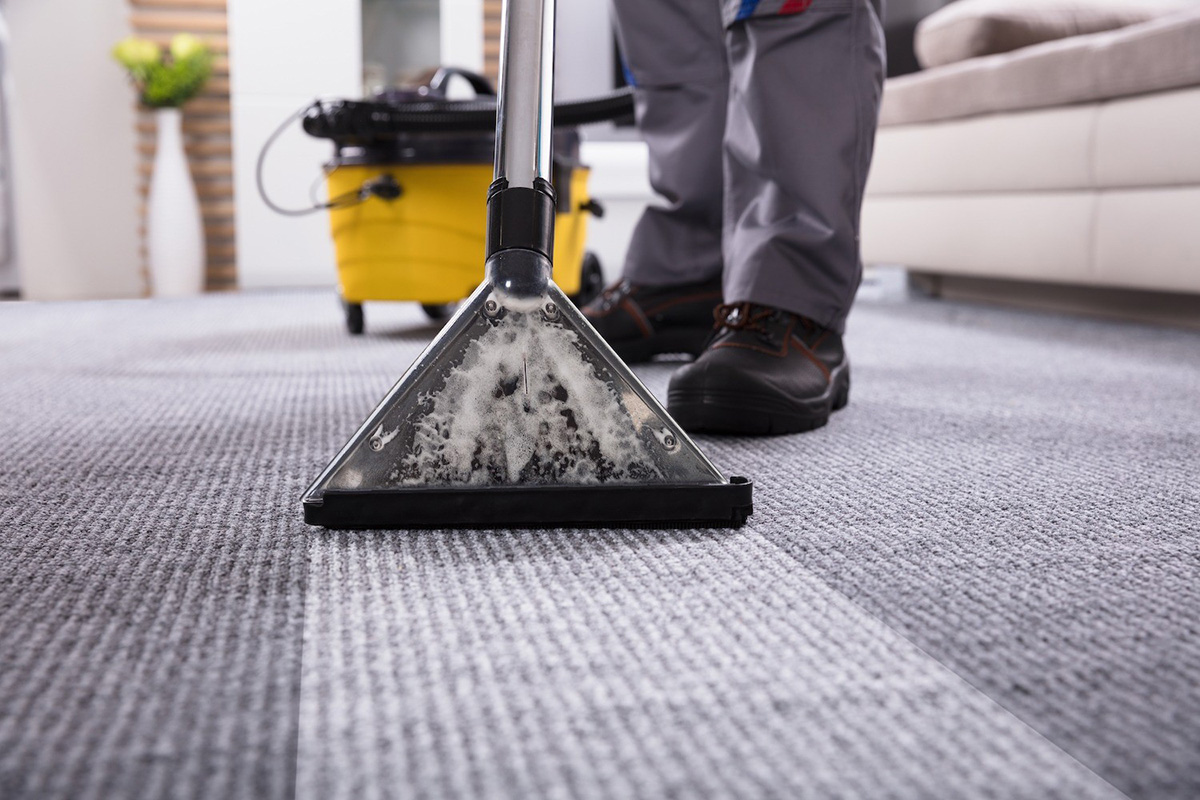

Articles
How To Clean And Deodorize A Carpet
Modified: March 6, 2024
Learn effective techniques and tips for cleaning and deodorizing your carpet with our helpful articles. Enhance the freshness and appearance of your home with these expert insights.
(Many of the links in this article redirect to a specific reviewed product. Your purchase of these products through affiliate links helps to generate commission for Storables.com, at no extra cost. Learn more)
Introduction
Welcome to the definitive guide on how to clean and deodorize a carpet. Carpets are a popular choice for flooring due to their comfort and aesthetic appeal. However, over time, carpets can accumulate dirt, stains, and unpleasant odors. Regular cleaning and deodorizing can help keep your carpet looking and smelling fresh.
In this article, we will provide you with step-by-step instructions on how to effectively clean and deodorize your carpet, using simple and readily available supplies. Whether you’re dealing with surface debris, tough stains, or unpleasant odors, we’ve got you covered.
Before we begin the cleaning process, it’s important to gather the necessary supplies. Having everything on hand will make the cleaning process more efficient. Here’s a list of items you’ll need:
- Carpet cleaner solution
- Vinegar
- Baking soda
- Hot water
- A spray bottle
- A stiff brush
- A vacuum cleaner
- Clean white towels or absorbent cloths
- Fans or open windows for ventilation
Now that you have all the necessary supplies, let’s move onto preparing the carpet for cleaning. It’s important to remove any loose debris and prepare the surface before tackling stains and odors. We’ll cover this in the next section.
Key Takeaways:
- Keep your carpet clean and fresh by gathering the necessary supplies, preparing the carpet, and removing surface debris and stains. Regular maintenance and prompt attention to spills and stains will help maintain a clean and inviting living space.
- Ensure your carpet stays clean and odor-free by deep cleaning, deodorizing, and properly drying it. Incorporate final touches such as grooming the carpet fibers and maintaining regular vacuuming to extend its lifespan and keep your space looking fresh.
Read more: How To Make A Carpet Deodorizer
Gathering Supplies
Before you begin the process of cleaning and deodorizing your carpet, it’s important to gather all the necessary supplies. Having everything on hand will make the process more streamlined and efficient. Here’s a list of items you’ll need:
- Carpet cleaner solution: Choose a carpet cleaner solution that is suitable for your type of carpet and the specific stains or odors you are dealing with. There are various options available in the market, including foam, powder, and liquid cleaners. Read the instructions carefully and choose a product that suits your needs.
- Vinegar: Vinegar is a versatile natural cleaning agent that can be used for a variety of household cleaning tasks. It’s especially effective in removing stains and deodorizing carpets. Make sure to have a bottle of distilled white vinegar on hand.
- Baking soda: Baking soda is another powerful and natural ingredient that can help eliminate odors from your carpet. It can also be used for mild stain removal. Stock up on a box of baking soda before you begin.
- Hot water: Hot water is essential for diluting the carpet cleaner solution and for deep cleaning your carpet. Ensure you have access to hot water from your sink or have a kettle on hand to heat up water if needed.
- A spray bottle: A spray bottle will come in handy for applying the carpet cleaner solution to targeted areas and for spot treating stains. Fill it up with a mixture of the cleaner solution and hot water.
- A stiff brush: A stiff bristle brush is necessary for scrubbing and agitating the carpet fibers, helping to loosen dirt, stains, and odors. Choose a brush specifically designed for use on carpets.
- A vacuum cleaner: A vacuum cleaner is an essential tool for removing surface debris, such as loose dirt and pet hair, before you begin the cleaning process. Make sure your vacuum cleaner is in good working condition and has clean filters.
- Clean white towels or absorbent cloths: It’s important to have clean white towels or absorbent cloths on hand to blot and remove excess moisture during the cleaning process. Avoid using colored towels as they may transfer dyes onto your carpet.
- Fans or open windows for ventilation: Proper ventilation is crucial during the drying process. If possible, set up fans to circulate air or open windows to allow fresh air in. This will help expedite the drying process and prevent musty odors.
Once you have gathered all the necessary supplies, you’ll be well-prepared to tackle the task of cleaning and deodorizing your carpet. In the next section, we’ll discuss how to properly prepare your carpet for the cleaning process.
Preparing the Carpet
Before you start the cleaning process, it’s important to properly prepare your carpet. This step will help ensure the effectiveness of the cleaning and deodorizing methods you will be using. Here’s what you need to do:
- Clear the area: Remove any furniture or objects from the carpeted area that you’ll be cleaning. This will give you unobstructed access to the entire carpet surface and prevent any potential damage to your furniture.
- Vacuum the carpet: Use a vacuum cleaner with a suitable attachment to thoroughly vacuum the carpet. This step will help remove loose dirt, dust, and debris from the surface. Pay close attention to high-traffic areas and areas near walls or furniture where dirt tends to accumulate.
- Check for loose fibers or damaged areas: Inspect the carpet for any loose fibers, tears, or damaged areas. If you find any, make a note of them and avoid applying excessive pressure or harsh cleaning methods on those spots. It’s important to handle delicate or damaged areas with care to prevent further damage.
- Read the manufacturer’s instructions: If your carpet came with specific cleaning instructions from the manufacturer, be sure to read and follow them. Different types of carpets may have different cleaning requirements, and following the manufacturer’s guidelines will help ensure you don’t accidentally damage the carpet fibers.
- Test for colorfastness: Before applying any cleaning solutions or products to your carpet, it’s crucial to test for colorfastness. Choose an inconspicuous spot on the carpet (such as a corner or under furniture) and apply a small amount of the cleaning solution. Gently blot the area with a clean white cloth and check if any color transfer occurs. If there’s no color transfer or damage to the carpet, you can proceed with the cleaning process.
By taking the time to properly prepare your carpet, you’ll ensure that it’s in the best condition to receive the cleaning and deodorizing treatments. Preparing the carpet will also help you identify any areas that require special attention or caution during the cleaning process.
In the next sections, we’ll cover the steps for removing surface debris, treating stains, deep cleaning the carpet, deodorizing, and drying, ensuring your carpet looks and smells fresh. Let’s get started with removing surface debris.
Removing Surface Debris
Before you delve into the deeper cleaning process, it’s important to start by removing surface debris from your carpet. This step will help get rid of loose dirt, dust, and other particles that may be trapped in the carpet fibers. Here are the steps to follow:
- Vacuum the carpet: Begin by vacuuming the carpet thoroughly using a vacuum cleaner with a suitable attachment. Start from one corner of the room and work your way across, making overlapping passes to ensure you cover the entire area. Pay extra attention to high-traffic areas and spots near walls or furniture.
- Use a brush or broom: For stubborn areas where the vacuum may not be able to reach, use a stiff bristle brush or broom to gently agitate the carpet fibers. This will help loosen and dislodge any trapped debris.
- Spot clean any visible stains: If you come across any visible stains while vacuuming, take immediate action to spot clean them. Use a clean cloth or paper towel and a mild cleaning solution suitable for your type of carpet. Blot the stained area gently without rubbing, as rubbing can spread the stain further.
- Remove small objects: Look out for any small objects or debris that may be sitting on the carpet’s surface. These can include coins, pins, pet toys, or other items that may have fallen and become lodged in the fibers. Pick them up and dispose of them properly.
- Consider using a carpet rake: If your carpet has long fibers or is densely packed, you may find it helpful to use a carpet rake. This tool can help lift the carpet fibers, allowing for better removal of surface debris and a more uniform appearance.
Removing surface debris is an essential first step in the carpet cleaning process. By thoroughly vacuuming, using a brush or broom to agitate the fibers, spot cleaning stains, and removing any small objects, you’ll create a clean and debris-free foundation for the deeper cleaning and deodorizing to come.
Next, we’ll dive into the process of treating stains on your carpet to ensure it looks its best.
Treating Stains
Stains on your carpet can be unsightly and can make your entire room look dirty and unkempt. It’s essential to treat stains promptly to prevent them from setting in and becoming more difficult to remove. Here’s a step-by-step approach to treating stains on your carpet:
- Identify the stain: Different types of stains require different treatment methods. Identify the type of stain you’re dealing with, whether it’s food, beverage, pet-related, oil-based, or unknown. This will help you choose the appropriate stain removal method.
- Blot the stain: If the stain is fresh, start by blotting it gently with a clean cloth or paper towel. Avoid rubbing or scrubbing the stain, as this can spread it further or damage the carpet fibers. Blot from the outer edges of the stain towards the center to prevent spreading.
- Use a cleaning solution: Depending on the type of stain, you’ll need a suitable cleaning solution. Here are a few common options:
- Mild detergent solution: Mix a few drops of mild detergent with warm water. Sponge the stain gently with the solution and blot with a clean cloth.
- Vinegar solution: Create a mixture of one part white vinegar and two parts water. Apply the solution to the stain, blot, and rinse with cold water.
- Hydrogen peroxide solution: Hydrogen peroxide can be effective for lightening and removing tough stains. Use a 3% hydrogen peroxide solution and apply it directly to the stain. Let it sit for a few minutes, blot, and rinse.
- Commercial stain remover: If you have a specific carpet stain remover, follow the instructions on the packaging to treat the stain.
- Blot and rinse: After treating the stain with the appropriate cleaning solution, blot the area gently with a clean cloth or paper towel to absorb the moisture. Rinse the treated area with clean water to remove any remaining residue.
- Dry the spot: Use a clean, dry cloth or paper towel to blot the spot and remove excess moisture. Avoid walking on the damp area until it’s completely dry to prevent dirt and debris from being tracked onto the carpet.
Remember, it’s important to treat stains as soon as possible to increase the chances of successful removal. If you’re dealing with stubborn or set-in stains or if you’re unsure about the appropriate treatment method, it’s always a good idea to consult a professional carpet cleaner.
Now that you’ve tackled the stains on your carpet, it’s time to move on to the process of deep cleaning the carpet to remove dirt, grime, and trapped odors.
To clean and deodorize a carpet, sprinkle baking soda over the entire surface and let it sit for at least 15 minutes before vacuuming it up. This will help to absorb odors and freshen up the carpet.
Read more: How To Clean And Deodorize A Mattress
Deep Cleaning the Carpet
Deep cleaning your carpet is a crucial step to remove embedded dirt, grime, and trapped odors. This process goes beyond surface cleaning and involves thoroughly cleaning the carpet fibers and the underlying padding. Here’s a step-by-step guide on how to deep clean your carpet:
- Prepare the cleaning solution: Mix the carpet cleaner solution with hot water according to the instructions on the packaging. Ensure that you use the appropriate ratio for your specific carpet cleaner.
- Test on a small area: Before applying the cleaning solution to the entire carpet, it’s important to test it on a small, inconspicuous area to ensure it doesn’t cause any discoloration or damage. Use a clean white cloth to apply the solution, then blot and check for any adverse reactions.
- Apply the cleaning solution: Start by applying the carpet cleaner solution to a small area of the carpet. Use a spray bottle or a clean cloth to apply the solution evenly. Work in manageable sections to avoid the solution drying before you can clean it.
- Scrub the carpet: Use a stiff brush or a carpet cleaning machine with rotating brushes to scrub the solution into the carpet fibers. Focus on areas with heavy traffic or visible stains. Use back-and-forth and circular motions to agitate the fibers and help dislodge dirt and grime.
- Allow the solution to sit: After scrubbing, let the cleaning solution sit on the carpet for the recommended duration specified on the product labels. This allows the solution to penetrate further and break down embedded dirt and odors.
- Rinse the carpet: Once the solution has had time to work its magic, thoroughly rinse the carpet with clean water to remove any remaining cleaning solution and residue. You can use a carpet cleaning machine or a bucket of water and a clean cloth to rinse the carpet.
- Extract excess water: After rinsing, use a wet vacuum or a carpet extractor to extract as much water from the carpet as possible. This step helps accelerate the drying process and prevents the growth of mold and mildew.
- Dry the carpet: To aid in drying, open windows or use fans to improve air circulation. Avoid walking on the damp carpet until it has completely dried.
Deep cleaning your carpet at least once a year is recommended, especially if you have high-traffic areas or if you have pets or young children. It helps remove deep-seated dirt and odors, leaving your carpet looking and feeling fresh.
Next, we’ll discuss how to deodorize your carpet to eliminate any lingering odors and leave your space smelling clean and pleasant.
Deodorizing the Carpet
Over time, carpets can absorb odors from pets, food spills, or general everyday use. Deodorizing your carpet is an essential step to eliminate unpleasant smells and freshen up your space. Here’s a step-by-step process to effectively deodorize your carpet:
- Remove surface debris: Before deodorizing, make sure to remove any surface debris or dirt from your carpet. Vacuum the carpet thoroughly to pick up loose particles that may contribute to lingering odors.
- Use baking soda: Baking soda is a natural deodorizer that can effectively neutralize odors. Generously sprinkle baking soda over the entire carpet, focusing on areas with strong odors or stains. Use a brush or broom to spread the baking soda evenly and work it into the carpet fibers.
- Let it sit overnight: Once you’ve applied the baking soda, allow it to sit on the carpet overnight. This will give the baking soda enough time to absorb odors. Keep children and pets away from the treated area during this time.
- Vacuum the baking soda: The next day, use a vacuum cleaner with a strong suction power to thoroughly remove the baking soda. Go over the carpet multiple times in different directions to ensure you’ve extracted all the baking soda and any particles it absorbed.
- Use a carpet deodorizer: If the baking soda alone doesn’t completely eliminate the odors, you can use a commercial carpet deodorizer. Follow the instructions on the product label and apply the deodorizer evenly across the carpet. Allow it to sit for the recommended time before vacuuming it up.
- Consider natural remedies: In addition to baking soda, there are several natural remedies you can try to deodorize your carpet. For example, mixing equal parts water and vinegar in a spray bottle can help neutralize odors. Simply spray the solution lightly over the carpet, let it sit for a few minutes, and then vacuum it up.
- Keep the area well-ventilated: To prevent odors from lingering, ensure proper ventilation in the room. Open windows or use fans to increase airflow, which will help remove any remaining odors and freshen up the space.
By following these steps, you can effectively deodorize your carpet, eliminating unpleasant smells and creating a fresher environment in your home. Remember to regularly deodorize your carpet to maintain a clean and odor-free living space.
Next, we’ll cover the important step of drying your carpet properly to prevent mold and mildew growth.
Drying the Carpet
Properly drying your carpet after cleaning is crucial to prevent moisture build-up, which can lead to mold and mildew growth. Here are the key steps to ensure your carpet dries thoroughly:
- Remove excess moisture: After cleaning or deodorizing your carpet, use a clean, absorbent cloth or towel to blot any excess moisture. Apply gentle pressure to absorb as much water as possible. Repeat this process until the cloth no longer picks up moisture.
- Use fans or open windows: Increase air circulation in the room by turning on fans or opening windows. Direct the fans towards the carpet to help speed up the drying process. If the weather permits, letting fresh air into the room can also aid in drying.
- Utilize dehumidifiers: If the humidity level is high, consider using dehumidifiers in the room. These devices help remove excess moisture from the air, speeding up the drying process and reducing the risk of mold growth.
- Avoid walking on the damp carpet: Until the carpet is completely dry, avoid walking on it to prevent soil transfer and to allow for even drying. Place signs or barriers around the area to remind others to stay off the carpet.
- Check for dampness: After a few hours, check the carpet for any signs of dampness. If you notice any wet or damp areas, use a clean, dry cloth or towel to blot the moisture. Continue the drying process until the carpet is completely dry.
- Inspect for any remaining moisture: To ensure the carpet is completely dry, perform a touch test in various areas. Press your hand firmly onto the carpet and check for any dampness. If the carpet feels dry to the touch, it’s safe to assume it has dried thoroughly.
It’s important to note that the drying time for a carpet can vary depending on factors such as humidity, carpet thickness, and ventilation. Be patient, as it may take several hours or even a day for the carpet to dry completely.
By following these steps and ensuring your carpet is thoroughly dried, you can prevent mold and mildew growth, maintain the integrity of your carpet, and create a cleaner and healthier living space.
Now that your carpet is clean, deodorized, and properly dried, let’s move on to the final touches to ensure it looks its best.
Final Touches
After going through the process of cleaning, deodorizing, and drying your carpet, it’s time for the final touches to enhance its appearance and prolong its freshness. Here are a few additional steps you can take for those finishing touches:
- Groom the carpet fibers: Use a carpet rake or a soft-bristle brush to gently groom the carpet fibers. This will help lift them and give the carpet a uniform and polished look.
- Consider applying a carpet protectant: Applying a carpet protectant can help prevent future stains and make it easier to clean spills in the future. Follow the instructions on the product and apply it evenly across the carpet.
- Place rugs or mats in high-traffic areas: To protect your freshly cleaned carpet, consider placing rugs or mats in high-traffic areas such as entryways or hallways. These can help prevent dirt and debris from being tracked onto the carpet.
- Maintain regular vacuuming: To keep your carpet looking fresh and clean, maintain a regular vacuuming schedule. Vacuum at least once a week, or more frequently in high-traffic areas, to remove dirt and prevent it from settling into the carpet fibers.
- Address spills and stains promptly: Accidents happen, so be sure to address any spills or stains on your carpet as soon as possible. Blot the area gently with a clean cloth and use a suitable stain remover to treat the stain. Prompt action can prevent the stain from becoming set-in and difficult to remove.
- Consider professional cleaning: While regular DIY cleaning is essential, it’s also recommended to have your carpet professionally cleaned at least once a year. Professional cleaners have specialized equipment and expertise to deep clean your carpet and tackle stubborn stains.
By following these final touches and incorporating them into your carpet maintenance routine, you can keep your carpet looking fresh, extend its lifespan, and enjoy a clean and inviting living space.
Congratulations! You have successfully learned how to clean and deodorize your carpet, from preparing it for cleaning to the final touches. Regular maintenance and prompt attention to spills and stains will help keep your carpet in tip-top shape.
Remember, a clean and fresh carpet not only enhances the overall aesthetic of your space but also contributes to a healthier environment for you and your family. Happy cleaning!
Read also: 15 Unbelievable Carpet Deodorizer for 2024
Conclusion
Cleaning and deodorizing your carpet not only improves its appearance but also helps create a healthier and more pleasant living environment. By following the step-by-step instructions provided in this comprehensive guide, you can successfully tackle surface debris, treat stains, deep clean, deodorize, and dry your carpet.
Starting with gathering the necessary supplies and preparing the carpet, you can then remove surface debris and treat stains using suitable cleaning solutions. Deep cleaning the carpet ensures the removal of embedded dirt and grime, while deodorizing eliminates unpleasant odors and leaves your space smelling fresh. Drying the carpet properly is crucial to prevent mold and mildew growth.
Remember to always follow the manufacturer’s instructions and test any cleaning solutions on a small, inconspicuous area before applying them to the entire carpet. Additionally, regular maintenance, such as vacuuming and prompt attention to spills and stains, will help keep your carpet looking its best in the long run.
Although the process may require some time and effort, the results are well worth it. A clean and fresh carpet not only enhances the aesthetic appeal of your space but also provides a comfortable and healthy environment for you and your family to enjoy.
If you ever encounter stubborn stains or feel that your carpet requires a deeper clean, it’s recommended to seek professional carpet cleaning services. Professionals have the expertise and equipment to handle even the toughest stains and ensure a thorough clean.
By incorporating the techniques and suggestions outlined in this guide, you’ll be able to maintain a clean and fresh carpet that will enhance the overall cleanliness and ambiance of your home. So go ahead, take the first step towards revitalizing your carpet, and enjoy a cleaner and healthier living space!
Frequently Asked Questions about How To Clean And Deodorize A Carpet
Was this page helpful?
At Storables.com, we guarantee accurate and reliable information. Our content, validated by Expert Board Contributors, is crafted following stringent Editorial Policies. We're committed to providing you with well-researched, expert-backed insights for all your informational needs.
